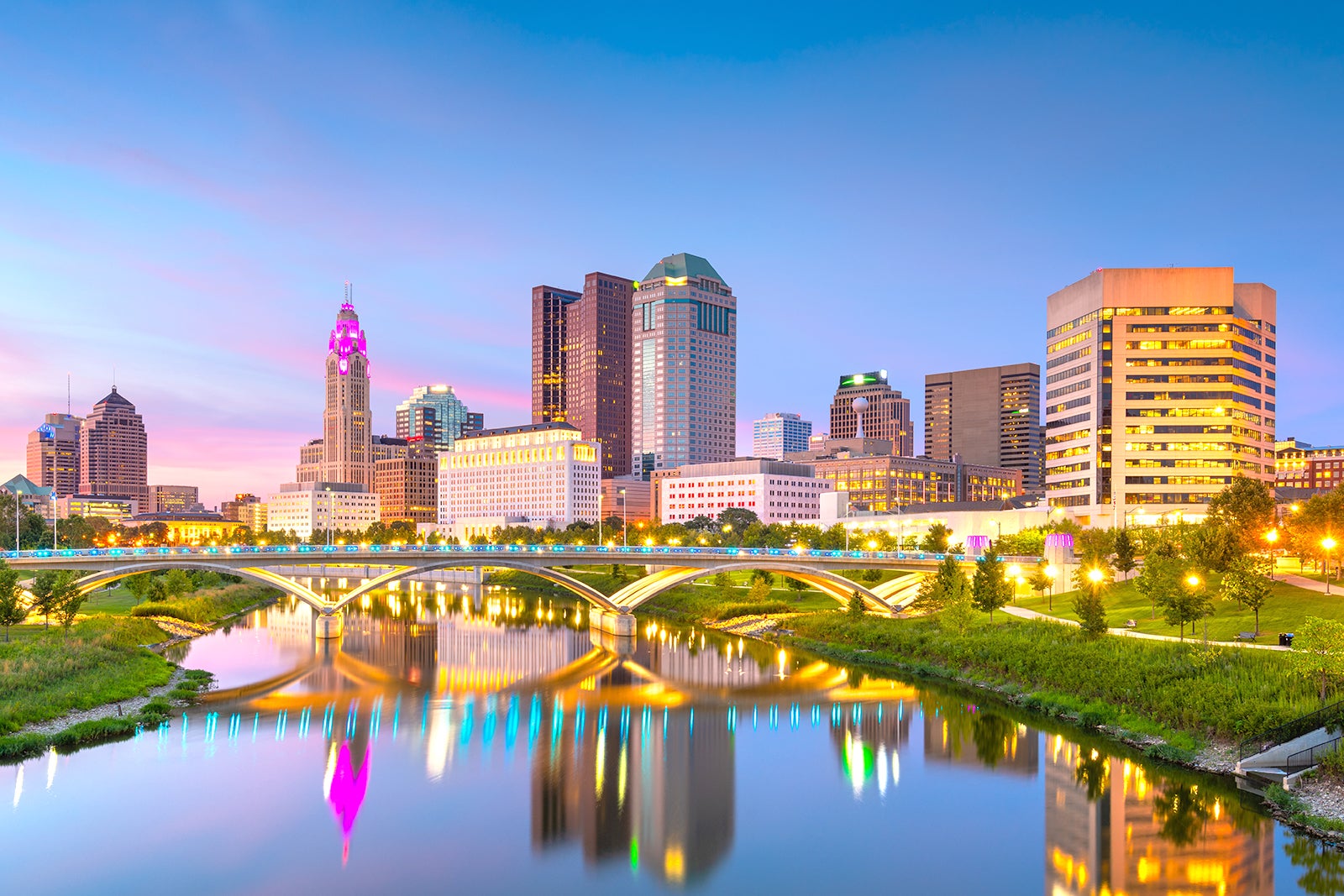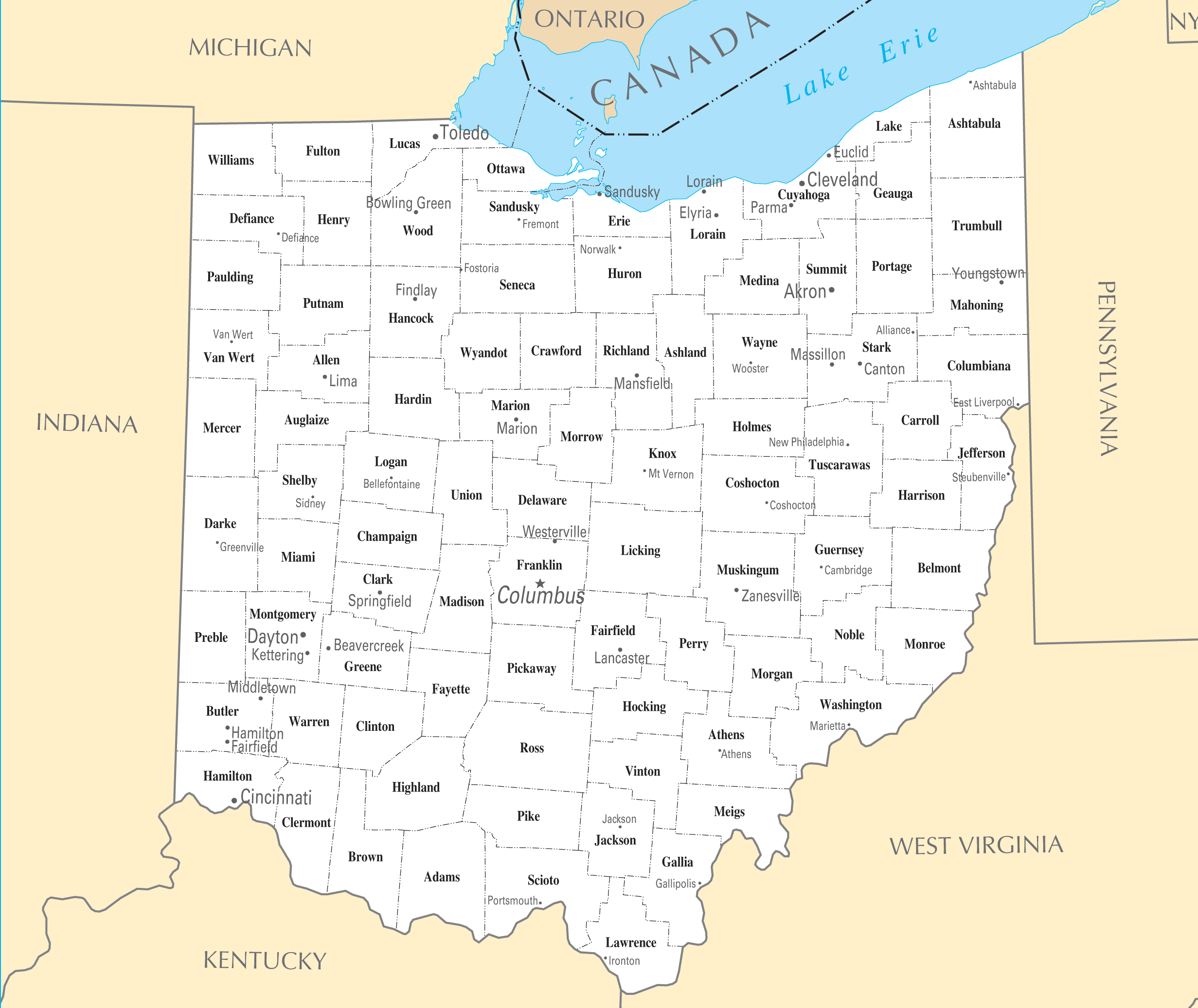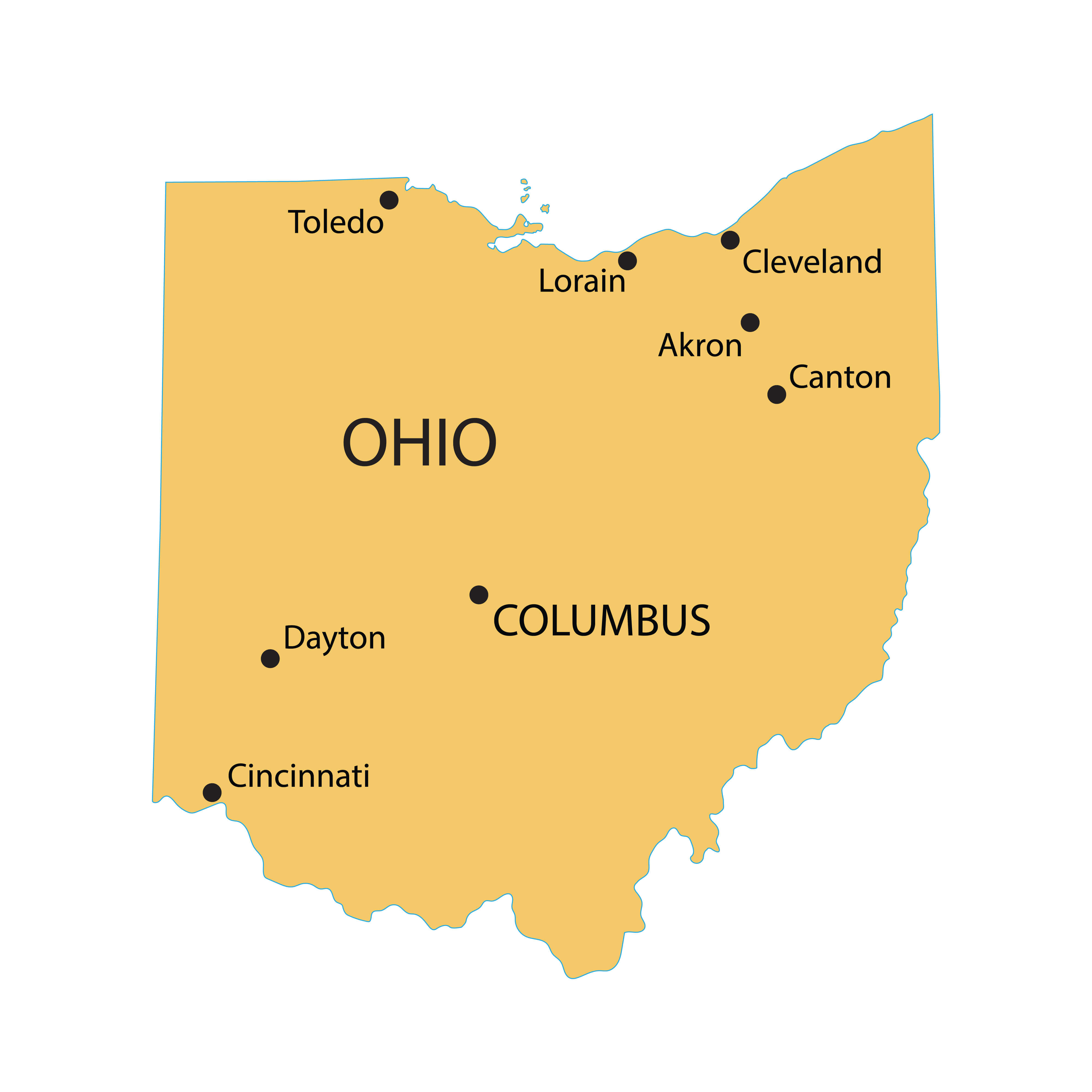Discovering Ohio's Largest City: What Makes It Stand Out?
Have you ever wondered what makes a city truly "largest"? It's a question that, in some respects, can have many answers. Just like asking about the "largest lake" in the world might bring up different ideas depending on whether you mean surface area or volume, so too it's almost with cities. When we talk about Ohio's largest city, we're really getting into what counts most for you. Is it the most people living there, the most land it covers, or perhaps its impact on the economy?
For many people, the idea of the `largest city in Ohio` immediately brings to mind population numbers, and that's usually a pretty good way to think about it, you know. But, as a matter of fact, the word "largest" can mean a few different things, just like how "the largest share of votes" might not be an absolute majority, but still the biggest group. We want to help you figure out what makes a city big, and which Ohio city truly holds the top spot, or spots, depending on how you look at things.
This look at Ohio's biggest urban area aims to give you a clear picture. We'll explore the main contender, its growth, and what makes it such a vital spot in the state. So, if you're curious about Ohio's urban landscape, or you just want to settle a friendly debate, this is for you. It's a pretty interesting topic, honestly.
Table of Contents
- The Primary Contender: By Population
- Why Columbus Grew So Much
- Other Ways to Be "Largest": Area and Economy
- Cleveland: A Historical Giant
- Cincinnati: The Queen City
- What Makes a City Thrive?
- Frequently Asked Questions
- Looking Ahead for Ohio Cities
The Primary Contender: By Population
When most folks ask about the `largest city in Ohio`, they're typically thinking about how many people live there. And, by that measure, the answer is Columbus. As of recent estimates, Columbus stands out with a population that significantly outpaces other Ohio cities. It's a pretty big deal, you know, being the capital and all.
Columbus has seen steady growth over the past few decades, which is a bit different from some other older industrial cities in the state. This growth makes it a truly prominent urban center. It's not just about the numbers, though; it's about the feeling of a place that's still expanding, still building, and still drawing people in. You can really feel that energy there, frankly.
This population growth is a key indicator of its overall health and appeal. It suggests a place where opportunities are available and where people want to settle down. It's quite a dynamic place, in some respects, and that's part of its charm. The city has done a lot to attract new residents and businesses, which helps it stay on top.
Why Columbus Grew So Much
So, why has Columbus become the `largest city in Ohio` by population? There are a few reasons, honestly, that make a lot of sense. One big factor is its role as the state capital. Government jobs and related industries provide a stable base for employment. This kind of stability, you know, can really help a city grow steadily over time.
Another reason is its central location within the state. Columbus is pretty much in the middle of Ohio, making it accessible from all directions. This has helped it become a hub for logistics and distribution, as well as a popular spot for conventions and events. It's a very convenient place for businesses and people alike, actually.
The city also benefits from a diverse economy that goes beyond just government. It has strong sectors in education, with The Ohio State University being a huge presence, and also in technology, healthcare, and insurance. This variety means that if one area slows down, others can often pick up the slack. It's a really good setup, to be honest.
Furthermore, Columbus has invested a lot in its infrastructure and quality of life. There are new developments, a lively downtown area, and plenty of parks and cultural attractions. These things make a city an appealing place to live, which, you know, draws more people in. It's pretty clear they've put a lot of thought into making it a great place.
Other Ways to Be "Largest": Area and Economy
While population is a common way to define "largest," it's not the only way, is that? Just like when we talk about a "list of numbers," we might ask for the "biggest number" or the "largest number," and both could be right. A city can also be the `largest city in Ohio` by its land area, or by the size of its economy.
When we consider land area, the picture can sometimes change. Some cities, while not having the most people, might cover a vast amount of ground. This can happen if they've annexed surrounding areas over time, or if they were simply planned with a lot of space. It's a different kind of "big," you know, but still important to think about. This kind of expansion means different challenges for city services, too.
Then there's the economy. A city might have a smaller population but a very powerful economic output, perhaps due to specific industries or a high concentration of corporate headquarters. This makes it "largest" in terms of its financial influence. It's a really interesting way to measure importance, honestly, because it shows where a lot of money and jobs are generated. This economic strength can bring a lot of resources to a place, too.
Cleveland: A Historical Giant
Cleveland, for a long time, was seen as the `largest city in Ohio`, especially in the early to mid-20th century. It was a major industrial center, sitting right on Lake Erie, and a very important port city. Its history is tied to steel, manufacturing, and shipping, which, you know, brought a lot of people and wealth to the area. It was a true powerhouse, basically.
While its population has shifted over the years, Cleveland still holds a very significant place in Ohio's story. It's home to world-class medical facilities, like the Cleveland Clinic, and a vibrant arts and culture scene, including the Rock & Roll Hall of Fame. These things, as a matter of fact, still draw many visitors and residents. It's a city with a lot of character and resilience, you know.
Cleveland's metropolitan area, which includes its surrounding suburbs, is still one of the largest in Ohio. This means that while the city proper might not have the most residents, the wider region it anchors is very substantial. It's a great example of how "largest" can sometimes refer to a whole urban region, rather than just the city limits, which is pretty interesting.
Cincinnati: The Queen City
Down in the southwest corner of Ohio, on the Ohio River, sits Cincinnati, often called the "Queen City." It was, for a time, one of the fastest-growing cities in the country, especially in the 19th century. Its location made it a key trading and transportation hub, linking the North and South. It's a city with a very rich history, really.
Cincinnati has a strong corporate presence, with several Fortune 500 companies headquartered there. This contributes a lot to the state's economy. It also has a thriving arts scene, beautiful historic neighborhoods, and a passionate sports culture. These are things that, you know, give a city its unique flavor and appeal. It's a pretty charming place, honestly.
Like Cleveland, Cincinnati's metropolitan area is quite extensive, encompassing parts of Kentucky and Indiana. This regional influence makes it a major player, even if its city-proper population isn't the highest. It shows that "largest" can be about regional impact, which is a slightly different way of looking at things, but just as valid, arguably.
What Makes a City Thrive?
Thinking about what makes a city the `largest city in Ohio` or any place, it's not just about population counts. It's about a mix of things, you know. A strong economy with diverse job opportunities is key. People need places to work and ways to support themselves. This is pretty fundamental, as a matter of fact.
Good infrastructure, like reliable transportation, good schools, and accessible healthcare, also plays a huge part. These are the things that make daily life easier and more pleasant for residents. A city that invests in these areas tends to attract and keep its people. It's just good planning, really.
A vibrant culture, with parks, museums, restaurants, and entertainment options, makes a city appealing. People want places to enjoy their free time and connect with others. This "quality of life" factor is becoming more and more important for urban growth. It's almost as vital as jobs, in a way. You know, people want to live somewhere they can truly enjoy.
Finally, a forward-thinking approach to urban planning and development helps a city adapt and grow. This means being open to new ideas, building for the future, and making sure the city can handle more people and activity. It's about making sure the place can keep up, which is a pretty big challenge for any growing city, honestly.
Frequently Asked Questions
Is Columbus the largest city in Ohio?
Yes, as of current population estimates, Columbus is the `largest city in Ohio` by population. It has held this position for quite some time now, too. Its steady growth and central location have helped it maintain this lead, honestly. It's a pretty clear winner when you look at the numbers.
What is the population of Columbus Ohio?
The population of Columbus, Ohio, is well over 900,000 residents, making it the most populous city in the state. The exact number changes a bit year by year, but it's consistently growing. You can find the very latest figures from official census data, which is usually updated every few years. It's a really big number, as a matter of fact.
What are the largest cities in Ohio by area?
While Columbus is largest by population, the city with the largest land area can sometimes vary depending on how annexations are counted. Columbus is very large in terms of area too, due to its continued expansion. Other cities like Cleveland and Cincinnati also cover significant land, especially when considering their broader metropolitan areas. It's a bit more complex than just population, you know, when you look at land size.
Looking Ahead for Ohio Cities
The story of Ohio's largest cities is always changing, you know. While Columbus currently holds the top spot for population, the dynamics of urban life mean things can always shift. Cities like Cleveland and Cincinnati continue to reinvent themselves, focusing on new industries and improving quality of life for their residents. It's a really interesting development to watch, honestly.
The idea of "largest" itself, as we've discussed, can mean different things. It might be the most people, the biggest land area, or the greatest economic output. Each way of looking at it tells a slightly different story about a city's importance and influence. To learn more about Ohio's urban centers, you can find other interesting details on our site. You know, there's always more to explore about these places.
Ultimately, what makes a city truly great goes beyond just its size. It's about the people, the opportunities, and the spirit of the place. Ohio has many wonderful cities, each with its own unique character and strengths. We encourage you to visit and experience them for yourself, and link to this page for official state information. It's a pretty good way to understand what makes these places tick, honestly.

Ohio - Go Guides

City Map Of Ohio | Maps Of Ohio

Largest Cities In Ohio 2025 - Leonard Manning